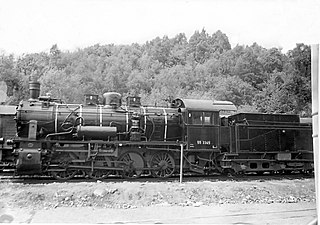
The Prussian G 8.1 was a heavier, stronger development of the G 8 and was initially referred to as a 'strengthened standard class'.
The Mecklenburg T 3 was a German, goods train, tank locomotive built for the Grand Duchy of Mecklenburg Friedrich-Franz Railway from 1884. Originally designated as the Class XVII it had an 0-6-0T wheel arrangement and was based on the Prussian T 3.
The Mecklenburg T 7 engines were German, six-coupled, narrow gauge, steam locomotives with the Grand Duchy of Mecklenburg Friedrich-Franz Railway. They were employed on the Bäderbahn between Bad Doberan and Heiligendamm. They replaced the existing vehicles after the line had been extended to 15.4 kilometres to Arendsee. The three engines, which were later given the numbers 99 301 - 99 303 in the 1920s by the Deutsche Reichsbahn, were delivered in 1910, 1911 and 1914. The design of these locomotives was heavily based on those of the Class T 3 from Prussia. Later, two units went to the so-called Rübenbahn, the branch line from Tangermünde to Lüderitz. No. 99 302 was retired in 1932, the other two were given to the USSR in 1945 as reparations.
The steam locomotives of Oldenburg Class P 4.1 were German locomotives built for the Grand Duchy of Oldenburg State Railways between 1896 and 1902. They were based on a Prussian P 4.1 prototype and a total of 19 engines were procured up to 1902. Overall the Oldenburg engine was less powerful than its Prussian counterpart, because the grate area was smaller and the steam dome was omitted. The regulators was housed in the smokebox. The Deutsche Reichsbahn took them over in 1920 and allocated them numbers 36 1201 to 36 1219. They were retired in the 1930s.

The Oldenburg Class P 4.2 steam locomotives were German engines built for the Grand Duchy of Oldenburg State Railways between 1907 and 1909. They were based on the standard variant of the Prussian P 4.2, but there were a number of small differences such as a Ranafier steam dryer and, on three examples, a Lentz valve gear, a system widely used in Oldenburg. Production began in 1907 and eight engines were procured up to 1909.
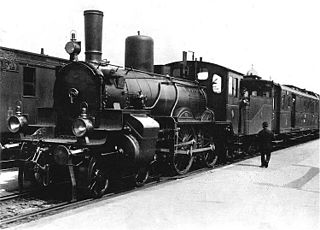
The Oldenburg Class S 3 steam locomotive was a German engine built for the Grand Duchy of Oldenburg State Railways in 1903 and 1904. It was based on a Prussian prototype, the Prussian S 3, and procured for the route between Wilhelmshaven, Oldenburg and Bremen. It was the first express train engine built for the Oldenburg state railways and also the first one fitted with a steam dome. It replaced the old P 4 passenger train locomotives.
The Oldenburg G 4.2 steam locomotives were goods train engines built for the Grand Duchy of Oldenburg State Railways between 1895 and 1909 in several series.
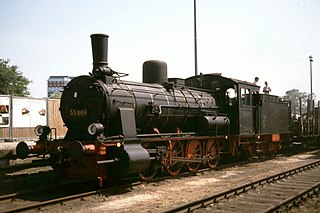
The Oldenburg G 7 steam locomotive was a German 0-8-0 locomotive produced for the Grand Duchy of Oldenburg State Railways. It was an eight-coupled engine, intended for heavy goods train duties, and was based on the Prussian G 7. It had a 1,660 mm diameter boiler located 2,820 mm above the top of the rails in the plate frame, and was equipped with a single Walschaerts valve gear as well as a Lentz valve gear. Thirteen were taken over by the Deutsche Reichsbahn, grouped into DRG Class 55.62 and given numbers 55 6201–55 6213.

The Mecklenburg T 4 was a German steam locomotive built for the Grand Duchy of Mecklenburg Friedrich-Franz Railway as a goods train 2-6-0T with a leading axle and three coupled axles. In 1925 it was incorporated in the renumbering plan of the Deutsche Reichsbahn as DRG Class 91.19.
The Oldenburg Class T 5.1 was a German steam locomotive built for the Grand Duchy of Oldenburg State Railways as a tank engine for passenger train duties. Its design was based on that of the Prussian T 5.1.
The Prussian G 5.4 was a German goods train locomotive with a compound engine. Due to its top speed of 65 km/h it was also used on passenger services. The G 5.4, like the G 5.3, differed from the G 5.1 and G 5.2 in having a shorter wheelbase and higher boiler pitch. In addition, the Krauss-Helmholtz bogies enabled its riding qualities to be improved, especially at higher speeds. Between 1901 and 1910 a total of about 760 vehicles of the Class G 5.4 were built for the Prussian state railways. The last 25 locomotives were fitted once again with an Adams axle.

In 1905 the Prussian state railways grouped six-coupled, medium-powered, goods train, tank locomotives into its Class G 3. In addition to standard locomotives, there were also 285 G 3s that were not built to German state railway norms, because they had been built, in most cases, before the foundation of the Prussian state railways.
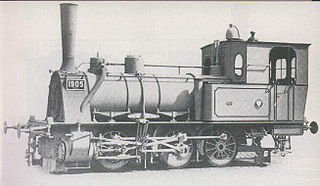
The Prussian Class T 3 steam locomotives procured for the Prussian state railways were 0-6-0 tank locomotives. Together with the Prussian T 2 they were the first locomotives that were built to railway norms. The first units were delivered by Henschel in 1882.
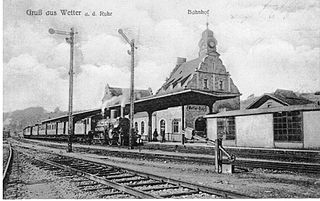
The Mecklenburg Class P 4.2, formerly Class VII, were early German steam locomotives operated by the Grand Duchy of Mecklenburg Friedrich-Franz Railway and were used specifically for hauling express trains on the line from Warnemünde to Berlin. They were mechanically identical with the Prussian P 4.2. All 31 units were taken over by the Deutsche Reichsbahn who incorporated them as Class 36.6 with numbers 36 602–620 and 651–662. The first series of numbers were engines with a 14 t axle load, the second those with a 15 t axle load. In 1931 the last locomotive of this class was retired.
The Prussian G 5.5's were early German freight locomotives with a compound engine. Unlike the otherwise identical G 5.4 they had a leading Adams axle instead of a Krauss-Helmholtz bogie. The delivery of the G 5.5 in 1910 followed directly on from that of the G 5.4. A total of either 20 or 25 G 5.5 were built.
The Prussian Class P 2 consisted of various types of early, passenger train, steam locomotive operated by the Prussian state railways. There were 294 2-4-0 locomotives, 24 0-4-2 locomotives and two engines with a 4-4-0 wheel arrangement. Of the 2-4-0 type, 88 came from railway companies that were the predecessors to the Prussian state railways and did not comply with Prussian norms, 24 were of the Ruhr-Sieg type and 182 were standard P 2s. The 0-4-2 locomotives were identical with the Prussian G 2.
The Mecklenburg Class G 4.2 operated by the Grand Duchy of Mecklenburg Friedrich-Franz Railway was a goods train, steam locomotive with a compound engine. It was procured between 1901 and 1905 from Henschel and Linke based on the Prussian G 4.2 prototype. A total of five machines were built for Mecklenburg. It was planned that they would be taken over by the Deutsche Reichsbahn and were to have been given numbers 53 401 to 53 405 according to the 1923 provisional DRG renumbering plan. But they were retired by 1924 before the final plan was issued.

The Prussian G 7.3 was a class of 2-8-0 locomotives of the Prussian state railways. The third class of the G 7 series, they were intended to power heavy goods trains on steep inclines, on which the permissible axle load was not yet that high. This affected for example, the Paderborn–Holzminden and Betzdorf–Siegen routes.
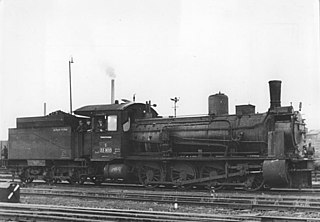
The Prussian G 7.2 was a class of 0-8-0 tender compound locomotives of the Prussian state railways. In the 1925 Deutschen Reichsbahn renumbering plan, the former Prussian locomotives produced from 1895 to 1911 were given the class designation 55.7–13; while the former Grand Duchy of Mecklenburg Friedrich-Franz Railway locomotives were classified as 55.57.
The Prussian G 4.2 was a class of compound 0-6-0 goods locomotive of the Prussian State Railways. It was a compound version of the G 3 and G 4.1 types by Henschel.











